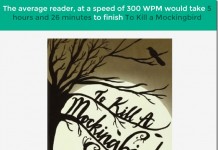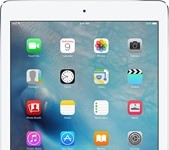Xerox’s labs in Palo Alto (PARC) are where Alan Kay and colleagues invented the Dynabook and where the mouse–pre-Jobs, pre-Gates–emerged.
So what’s going on these days at the Palo Alto Research Center, Inc., a spin-off version of the labs–especially in an e-book sense? Bill Janssen, a familiar name to many on the eBook Community list, has his share of pet projects mentioned on his home page. I’ll welcome his sharing progress reports with us.
Meanwhile Mark Roth of the Pittsburgh Post-Gazette offers an intriguing overview of advanced, computer-related research; and he writes among other things of an interface approach called the 3Book. See pictures below of the virtual book in “closed” and “open” positions. A PARC paper describes the 3Book as “a 3D interactive visualization of a codex book [link added] as a component for digital library and information-intensive applications. The 3Book is able to represent books of almost unlimited length, allows users to read large format books, and has features to enhance reading and sensemaking.” See the Rest section of this post for more from Roth:

At the Xerox research center, the phenomenon of packing more information into less space is embodied in the 3Book, a digital book that mimics its traditional counterpart but contains a slew of bells and whistles.
The 3Book added has the appearance of a real book on the computer screen, and a reader can turn its pages by touching the corner of each page or touching the edge of the display to flip through pages quickly.
Still in the developmental stage, it also contains features that no regular book has, Dr. [Stuart Card of PARC] said.
It has a searchable index that can be expanded to show all other parts of the book related to the search term. Using semantic processing software, it can create a CliffNotes-style version of the book which highlights selected passages.
Most importantly, it could store or download thousands of other books onto its pages, Dr. Card said.
“People say, ‘But I still want to take my paperback to the beach,’ ” Dr. Card said. “I completely agree with them on the one book you take to the beach, but you don’t want to take your whole library to the beach,” which is something you could do with 3Book
I myself wonder about all that pseudo-page-flipping; isn’t it a little like equipping a Buick with a buggy whip? But if people want their books that way, especially older readers, I haven’t a problem, just so the approach is not mandatory for everyone.
As is evident from the PARC site, work on the 3Book has been going on at least several years. It’ll be interesting to see what the final results are.
What I do get excited about is the CliffNotes-style highlighting feature with the auto-pilot-style capablities.
Also of interest in the Roth piece: Tidbits about giant screens that would make Bill Gates jealous/ Just the ticket for displaying that virtual book in detail, eh? Also from the piece, you can ponder a neat fact on the amount of data in a terabyte:
Rick Rashid, the head of Microsoft Research and a former Carnegie Mellon professor, said it’s now possible to buy a terabyte of computer memory for about $700.
A terabyte, 1,000 gigabytes, is enough memory to “store every conversation you ever have from the time you’re born until you die,” Dr. Rashid said, or a full year’s worth of full-time video.


































wow, fascinating article. For the record, a terabyte is definitely within consumer range. I have three hard drives: 400 gigs, 160 gigs, 160 gigs and a usb external hdd which is 160 gig. (It’s for my video editing PC). And I really didn’t spend an arm and a leg.
I think the 3d possibilities can be exciting if they can embed flash and video. I don’t see much added value in making text 3d; please surprise me!
When you add flash-style stuff and video to the equation, Robert, yes, I’d definitely agree.
David
This strikes me as a good idea that sort of went in the wrong direction. There are things people like about p-books (portability, disposability, the feel of flipping through pages, the quirks it picks up through many years of use) but trying to mimic the look of a book and the page-flipping aspect on a screen misses the point. It strikes me as more strange than evocative of a p-book, since people are more and more used to reading things off a screen in text or scanned pdf setting. And taking this further, the thought of selecting what degree of “wear and tear” the 3D book has, feels mildly creepy. To my mind, flash and video embed just fine in the non-page-flipping e-book variety, and I’m not sure what a 3D book would add to that.
My colleagues across the hall, Lichan Hong, Ed Chi, and Stu Card, are the honchos behind 3Book. We sometimes joke that ReadUp is “2Book”. Both 3Book and ReadUp can draw page images and text from UpLib, but 3Book also uses an XML data structure that describes the structure of the book, in a fashion reminiscent of the OEBPS binder. 3Book exploits OpenGL for rendering, while ReadUp is pure Java Swing.
It’s not the only 3D book reader out there; check out this paper from the prolific Greenstone group in New Zealand titled “Realistic books: A bizarre homage to an obsolete medium?” In that system, the pages also get grubbier the more they are “handled”.
And yes, the giant multi-screen displays are real.
let’s be a bit harsh here…
This whole “make an ebook look like a pbook” is just stupid!
You basically take a good idea (ebook) and substract most of it’s advantages. And the worst thing is, that you need lots of processing and graphics power to do somethign completely useless.
The “learning curve” of ebooks has to be mastered differently.
After people have started using ebooks they’ll soon get used to it. I tired this myself. In “Preparation”, for the launch of the iRex iliad I started reading on my little PocketPC (with Mobipocket reader).
At first I couldn’t get into it, but after only a few days (during which i read only a few pages a day) I started getting used to it and now handle it just like a normal book. I’m halfway through my second book by now, and apart from the backlight and the small screen that still bother me I’m fairly happy.
I feel I’m now ready for the Iliad!